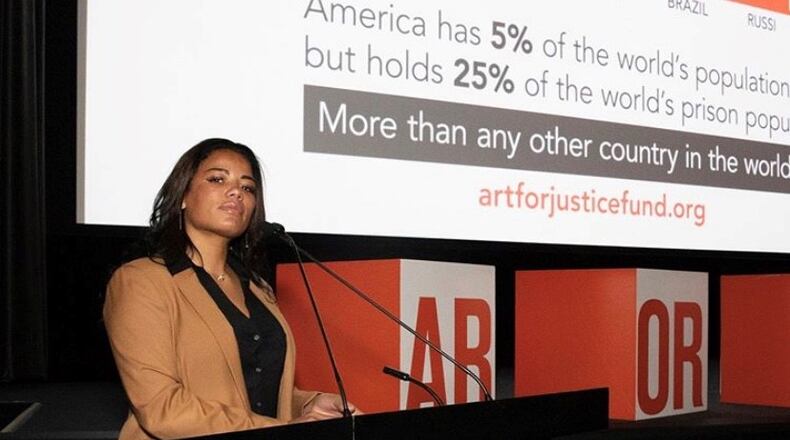The Dayton native was convicted and sentenced to life in prison at age 19 for the murder and robbery of 15-year-old Michelle Lai on Sept. 20, 1994. She was paroled on Christmas Day after Lai’s sister — Holly Lai Holbrook — wrote a letter to Ohio Gov. John Kasich in 2016 vouching for her innocence.
In opposition of the Defund The Police Movement, elected officials defend their stance by pointing to the decrease in the number of arrests in the last 40 years.
What that statistic won’t tell you is that while overall arrests are down, the number of arrests for women has increased by 750 percent since 1985.
Since 1970, the number of women in U.S. jails has increased 14-fold, according to the Vera Institute of Justice.
Ohio is on course with the national trend.
There are 4,500 women in Ohio’s prisons today with many factors contributing to the spike in incarcerated women. They all stem from the criminalization of women’s and girls’ responses to abuse and trauma.
To understand the landscape of the criminal justice system and women, we need to have a bit of cultural and historical context.
We have far to go to get beyond performative actions, but we can’t ignore collective enlightenment in recent years.
Black Lives Matter, Pride and MeToo Movements have all been critical in our duty to ensure a world where justice and privilege aren’t inextricably linked.
RELATED: Tyra Patterson: Life after two decades in prison
However, these revelations haven’t translated into widespread criminal justice reform.
Starting in the juvenile justice system, incarcerated girls are most often locked up for truancy and running away from home, according to a report by Prison Policy Initiative. These are common responses to abuse.
When we look closer, we see that Black girls are more likely to be incarcerated than white girls.
This is largely attributed to the adultification of Black girls.
Black girls are seen as older and more responsible than white girls.
Credit: DaytonDailyNews
This stems from years of enslavement in America when white children were “allowed” to be kids, while Black children – particularly Black girls – were already in caretaker roles and bearing children, often against their will.
A staggering 80 percent of women in prisons in the United States today have endured abuse of one or multiple forms.
Coping mechanisms include violence against an abuser, substance abuse, depression, rage, and self-harm, among so many others.
These behaviors dip into the territory of criminal activity – in small, incremental, tragic, or life-changing ways. But instead of mental health services that prioritize healing, women and girls are met with punitive measures.
According to the Sentencing Project, more than 40 percent of women experiencing incarceration in this country is due to drug charges. The war on drugs has ravaged the Black community for my entire lifetime. Today, it is also being used as a tool of mass incarceration to target women, many of whom are also the victims of crime themselves.
While the value of women is so often unfairly couched in her proximity to a man, it is impossible to ignore that 70 percent of incarcerated women are mothers.
For that reason and many others, the war on drugs and the abuse to prison pipeline are also a war on the well-being of our nation’s families, children, and the future.
About the Author

